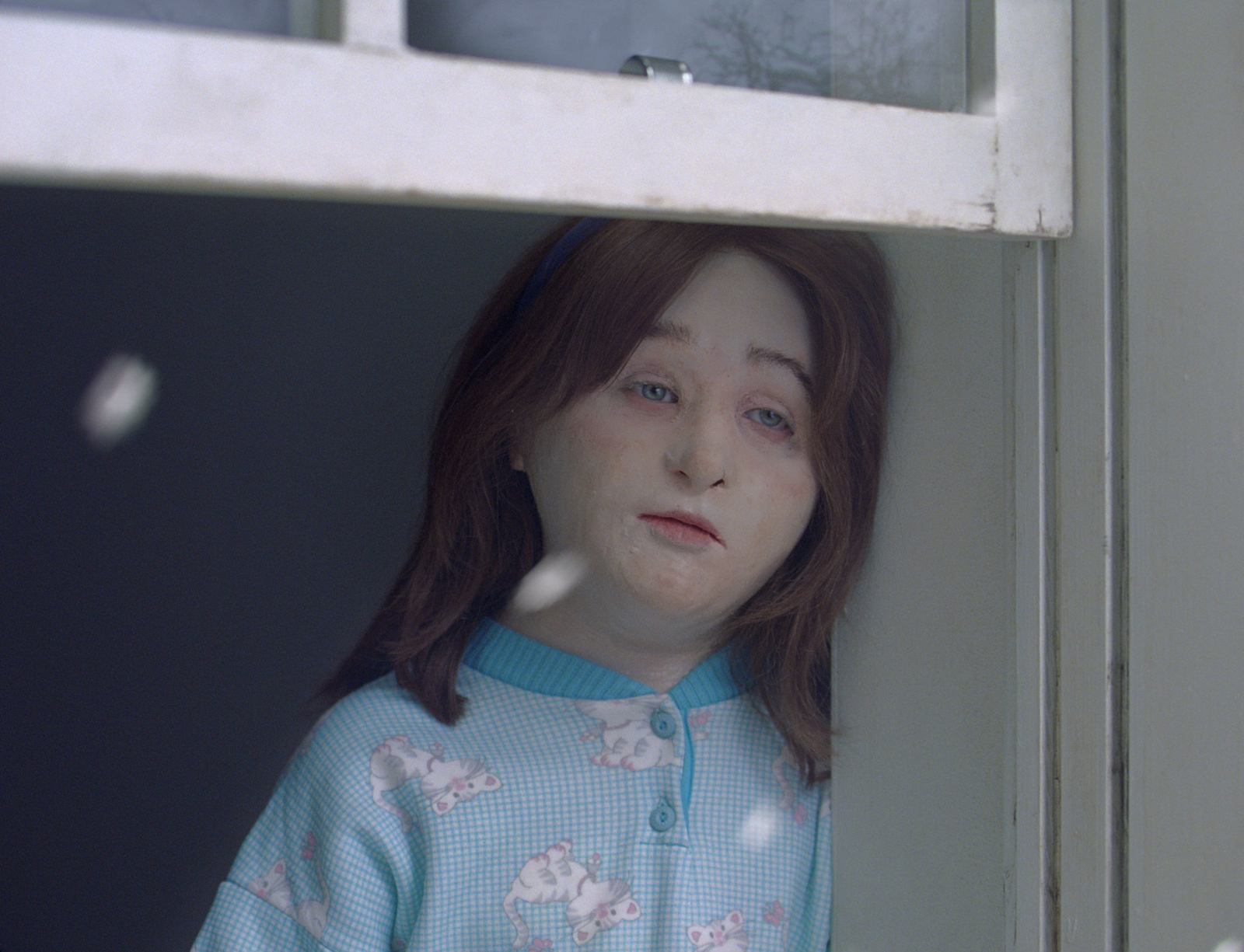“In general when I work, it’s not like I’m looking for something and I find moles, it’s more like moles find me, they pop up. I don’t know why, I just try to remain open to these kinds of visit”
I first met Diego Marcon on an island. We were on a residency at Lake Vassivière, in France, and he had begun to film clouds on Super 8 and to hand-develop the film in his residency apartment’s shower. The resulting silent short loop, Pour vos beaux yeux (For Your Beautiful Eyes, 2013), is a futile attempt to capture shape- shifting clouds, but also a brief meditation on seeing and film, on how light can be filtered and held for a moment, to be passed on. While on the island, Marcon introduced me to his earlier SPOOL series (2007–12), where in exchange for transferring someone’s home-video recordings from their tangle of Hi8, MiniDV and VHS formats to digital, the Italian artist was given permission to use the footage to create his own videos. The resulting edited shorts were shaped around what type of film genre Marcon determined the principal cameraperson – often a listless or doting dad – had subconsciously drawn on to direct their footage: one becomes a roving road movie; another a tense horror film. Cinema’s influence, Marcon suggests, is something beyond the direct experience of watching, but imbibed and distributed into how we imagine the world around us.
Marcon has since developed a series of striking short-films that make further use of the mechanics of cinema and the histories of cinematic effects, such as animatronics and CGI, as well as the narratives and tropes that have been produced by them. Imagine a brief aside in a Disney feature-film stretched to an eternal loop, drawn out so that we might fully appreciate its textures – but in being asked to stay with and dwell in that moment, we might also start to recognise an existential unease that has always been there. Ludwig (2018) is a short CGI musical, in which a young boy sings a lament about his ambiguous predicament: seemingly trapped in a ship’s dark hold, he is pitched about by the storm outside, the camera veering wildly from side to side. He lights a match, the accompanying piano keeping a tense and persistent rhythm as the match burns to his fingers and he’s left again in the dark. It’s high melodrama, and patently ridiculous that this poor blond boy can only convey his worry through such an elaborate and sonorous means; but it’s also a loop barely a minute long, and so we return to his woes again and again, with no way out. The Parents’ Room (2021), a ten-minute film shown as part of Cecilia Alemani’s The Milk of Dreams, at the 2022 Venice Biennale, is also a musical, although this time song is used to tell the story of a father murdering his family and then dying by suicide. Each of the characters is a lifesize puppet of sorts, the actors wearing slumping, silicone masks and prosthetic hands as they sing sweetly of their own deaths.
Such dark twists are typical of Marcon’s work, a black, dramatic irony that draws on our long-established expectations of what films can and should do. These subversions are usually paired with a very physical directness: whether that be the warmth of celluloid film used for most of his moving-image works, or, in his short film Monelle (2017), a stark blackness that is punctuated by unexpectedly loud pops and bright flashes that briefly illuminate disturbing scenes of lurking figures and dragged bodies. These effects impact viewers on an immediately somatic level, but Marcon seems to be seeking a place where both our bodily and emotional memories are stored, creating films that restlessly circle around the dread and desire that sit at the heart of the contemporary myth-machine that is film. Fresh from completing a new work using animatronics, Marcon spoke with me about genre, film memory and moles.
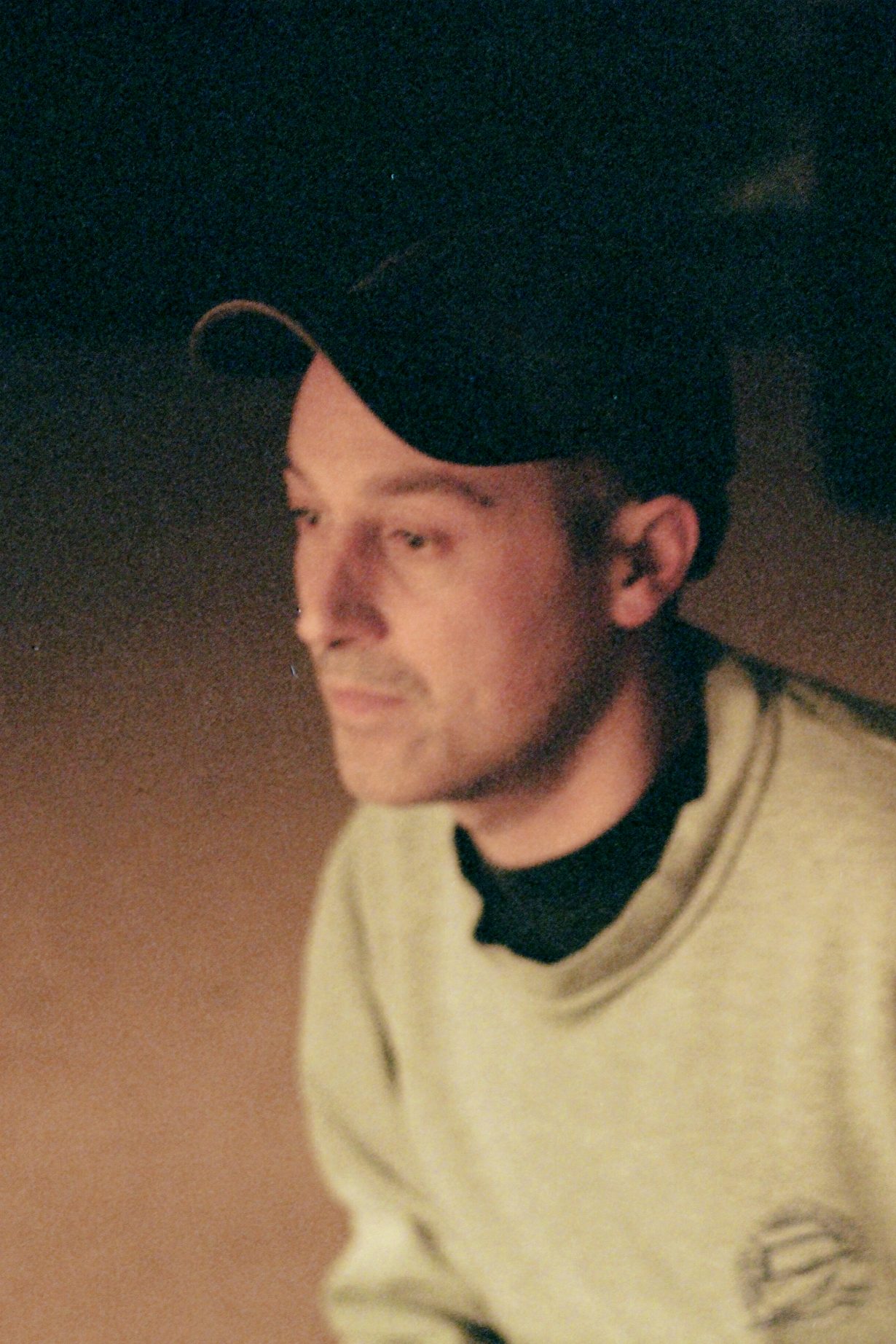
Inviting Projection
ArtReview The place, or the feeling, of youth recurs across your films. What are your first film memories?
Diego Marcon I had what I would later realise was a very strong childhood cinema experience. My parents divorced when I was five years old – when I was starting to form memories – and going to the cinema was very connected to my father coming to pick me up and take me with him for a few days, and cinema was something we started to do every weekend. It was at the beginning of the 1990s. I have a strong memory of going to see Batman Returns and my father taking me out of the cinema when the Penguin bites the nose of the journalist, probably because he found it too violent for a kid. Most Sundays were at the cinema, to see mainstream US films like Jurassic Park, and we were also huge clients of Blockbuster, with that particular voyage of going in to choose a VHS. I remember my father coming home with a few movies, like Cool Runnings, while I was on the sofa with a strong flu. In Italy, summer is a low season for cinema, we go more in fall and winter, when it’s bad weather outside. So it also feels very connected to a kind of literal darkness, melding long, cold winter days, feeling slightly feverish, with these type of blockbuster movies.
Recently I went back to some of the animation stuff I watched when I was a kid, Don Bluth films like The Secret of NIMH, An American Tail, All Dogs Go to Heaven – it was always Bluth’s films that really stuck in my head. Bluth – and I wasn’t aware of this at the time – was a Disney animator who had dropped out of the studio to make his own work. Despite the seeming all-encompassing galaxy of Disney, there are some feature films that don’t circulate in the same way now, or aren’t as well remembered, and move in their own realm.
AR There are recurring child protagonists and child archetypes in your films – the orphan, and echoes of myths like Pinocchio, in Ludwig or Il malatino. In your untitled animated works, characters are often faceless or only partially sketched out. Are these hollow vessels for the audience to fill?
DM It’s like the ‘Blacky Pictures’ from the 1940s, a set of pictures designed as a psychoanalytic tool, but the dog is just a kind of black spot – it’s less characterised, so less of a character and easier to fill. I do use – and ‘using’ is a kind of violent term, I know – them as a trigger for the audience. It can be sinister, but I like this ambiguity, with children as a hook, where people watching might enter a more empathetic and sentimental space. I’m interested in the work retaining a vulnerable position, with a strong emotional dimension. But this also has to do with spectacle, with the use of emotions by things like politics, propaganda, marketing and so forth. The sentimental and emotional level is where everything moves somehow, so that’s where art has to be engaged.
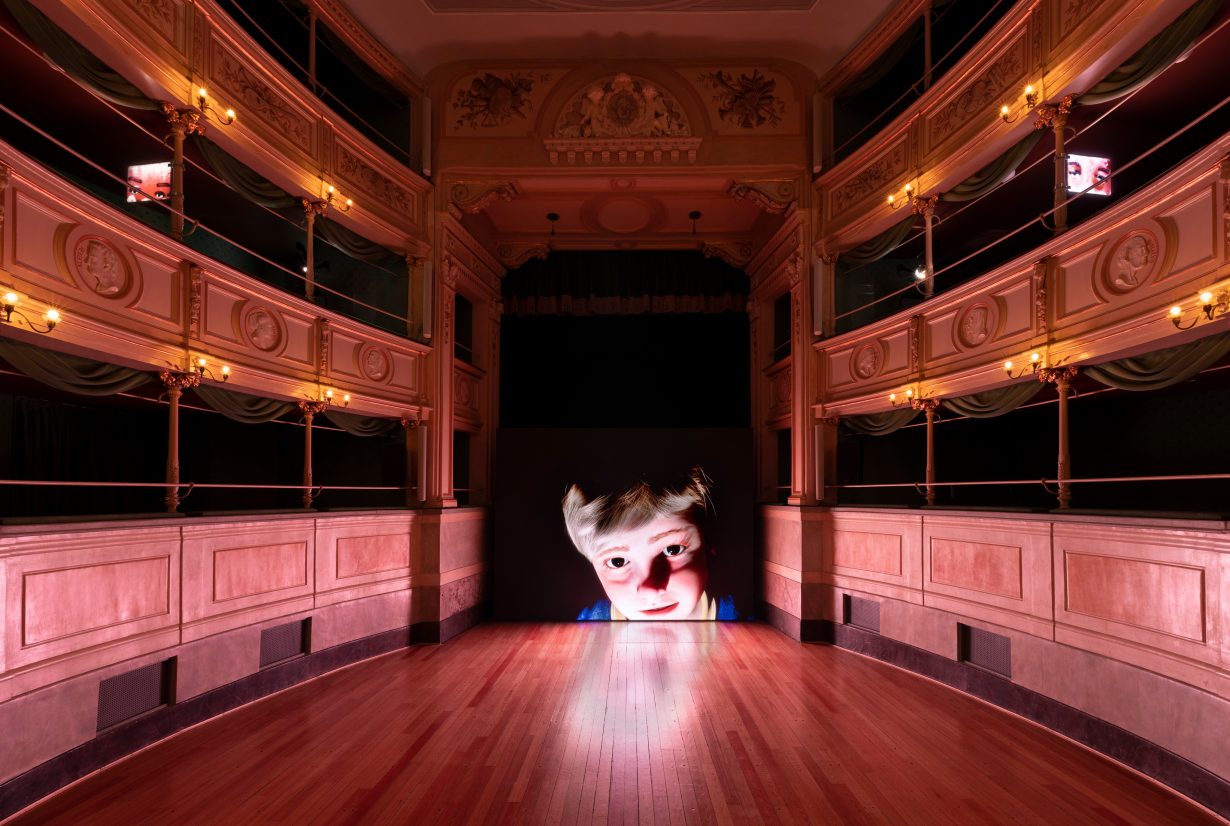
A Paranoid Beat
AR The sentiment in your work often includes a sense of missing something, a reverie. The works seem to long for something that remains unfulfilled, gesturing towards what’s missing without ever finding it.
DM It has a lot to do with melancholy, which is not like a missing where you know the object that has been lost, such as when in mourning. It’s more that something is missing but you don’t know what. In Italian there are many shades to the term mancare, where you can miss seeing someone or even use it for something like ‘I missed myself ’ when you faint or pass out.
AR Your recent film Dolle [2023] has a rhythmic aspect to it, the hypnotic recitation of numbers. You enter a space where you’re unsure if what you’re seeing is being repeated over and over, but then small details – a child’s noisy breathing or a hooting owl – break that illusion. Repetition and structure seem to be important to this sense of restless searching, circling around a pattern.
DM During the last month I have been listening almost only to Glenn Gould. I think part of the attraction is the sharpness of a cold, analytical execution of the score – which is a structure that can be worked through and manipulated. I’m influenced by techno, hardcore and gabber, which I was into when I was a teenager: the kick, the repetition and this very square, repetitive pattern, the structure of a four-four rhythm, with the samples and the looping that go in and out. The internal, solipsistic, wrapped-around- itself sort of vibe is an influence – that repetition of a single element, very paranoid, very fast, which I can see in Dolle.
AR In The Parents’ Room a bird appears at the window and starts to sing, a recognisable trope from Disney musicals. Monelle, as another example, draws strongly on the suspense and sound design of horror films. Are film genres a form of collective memory that you then play off?
DM Working with cinema means not only working with the medium, with moving images, film formats, narratives and so forth. It also means working with the cultural impact of cinema on society. That’s probably why I’m interested in mainstream entertainment, which shapes our shared psychological, emotional and visual landscape. I remember the one time I went to Los Angeles: everything looked so incredibly strange and at the same time so familiar, because I’d seen it in hundreds of films since I was a kid. It was incredibly melancholic, and like being in a neverending credits scene. Working with the cinema genre incorporates this entire background of archetypes, references for our psychoemotional states. Cinema itself is also a very bodily experience: both the darkness and the big projection that surrounds you, the venue, the volume of it. Working with Federico Chiari, the composer with whom I collaborate on the films, we like to move within a very precisely structured genre: like the pop-jazz Sinatra kind of song, the German lied, a treatment of the sound typical of horror movies and so on; we like to work inside certain codes and try to pervert them from the inside.
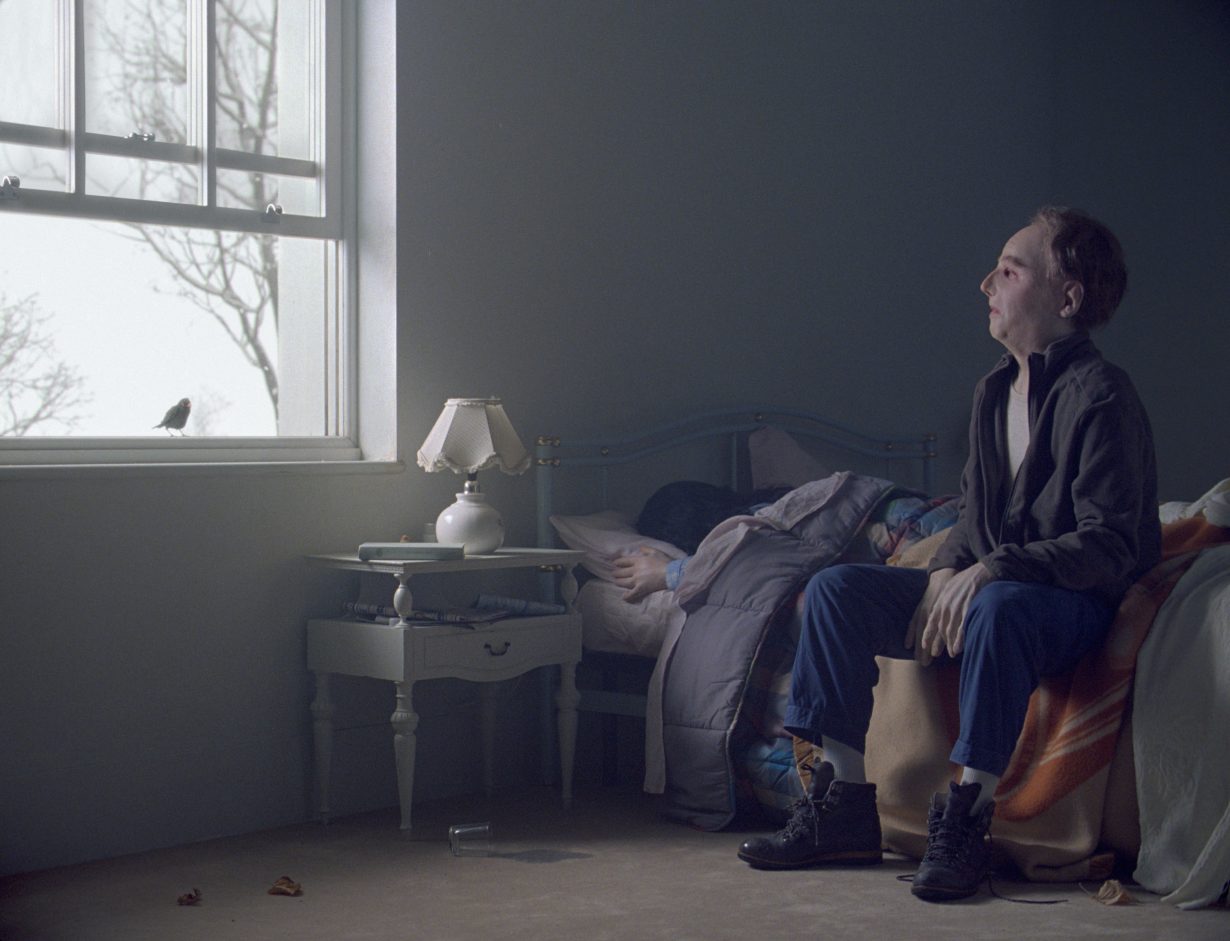
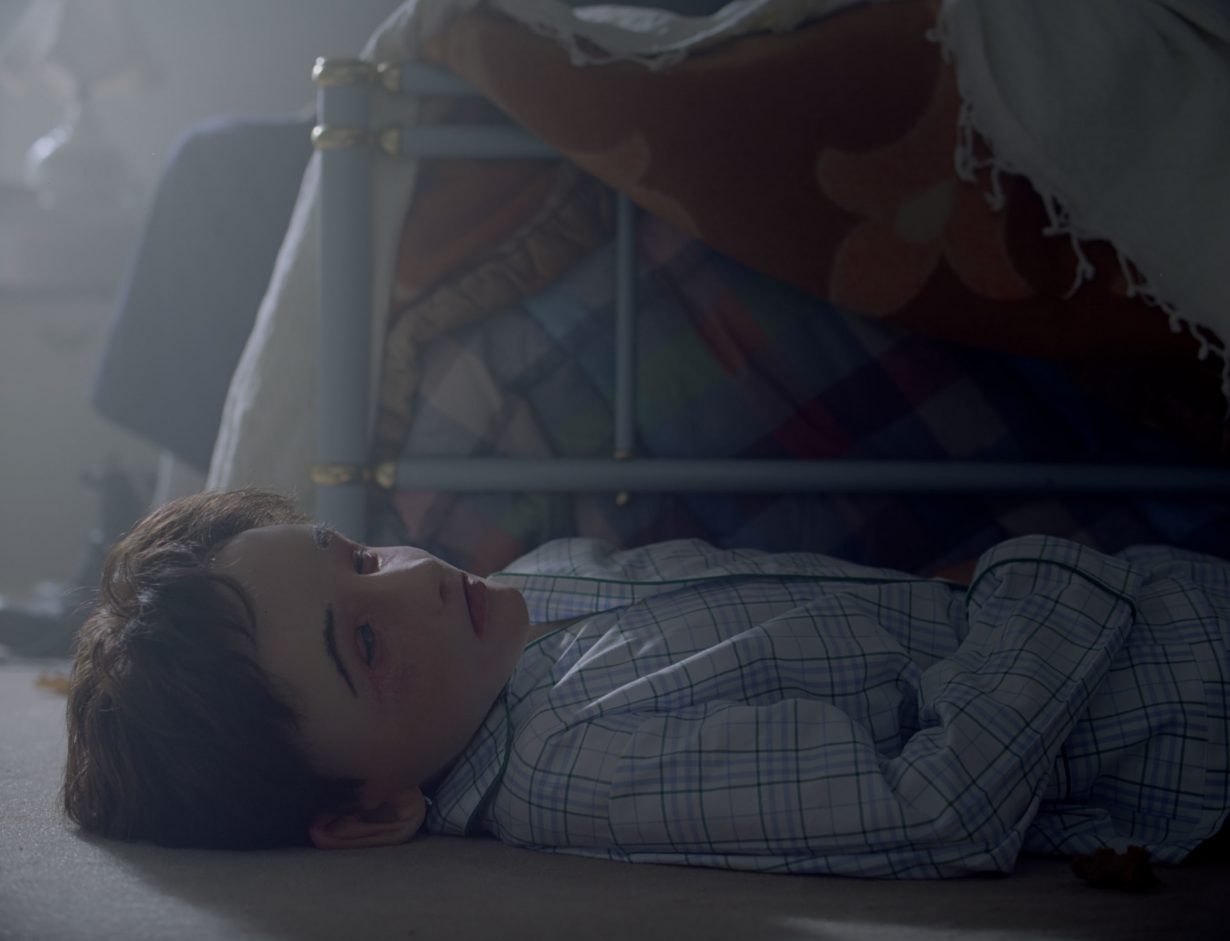
Technique
AR You’ve mentioned that the journey to make Monelle began with an invitation to work with The Museum of Industry and Labour in Brescia, where you found a camera that was used in making some of the first animation in Italy. Your works more generally perform aspects of film and animation history, like hand-developed film or cel-by-cel animation, drawing us into a performed archaeology of cinema techniques…
DM My first works were videos with a documentary approach, filming reality and then editing. The scriptwriting then structured what had been recorded, even if it might slowly abstract from a real situation towards something more fictional. Then making the cloud film, Pour vos beaux yeux, I thought about how a cloud is basically an outline of a shape, like a cartoon, and so I began to approach animation. When I started my first animations, drawing straight onto film, I began to understand that it was important to me that every work feature a technique or a process that – for me, and the crew of people I work with – is experimental, to have that sense of wonder and the marvellous. Moving towards different techniques is a way for us to keep expanding, and to put us in the condition to be amazed or surprised. But it also makes us think about the question of what can you, as a spectator, feel when exposed to these different techniques?
In Dolle we used animatronics, like those in The Neverending Story or Jurassic Park, where there is something different in the physical movements of the material. The set was completely automatised. With the animatronics we attempted to work with studios doing such work – these are studios that do a lot of advertising and commercial stuff, an attitude which is no fun, and that tends to reflect in the form at the end. In each film, for myself and my collaborators, it’s important to have a challenge, to see where we can take a discipline. So basically we set up our own animatronics lab in Tuscany and designed everything ourselves. This allowed us to find our own way.
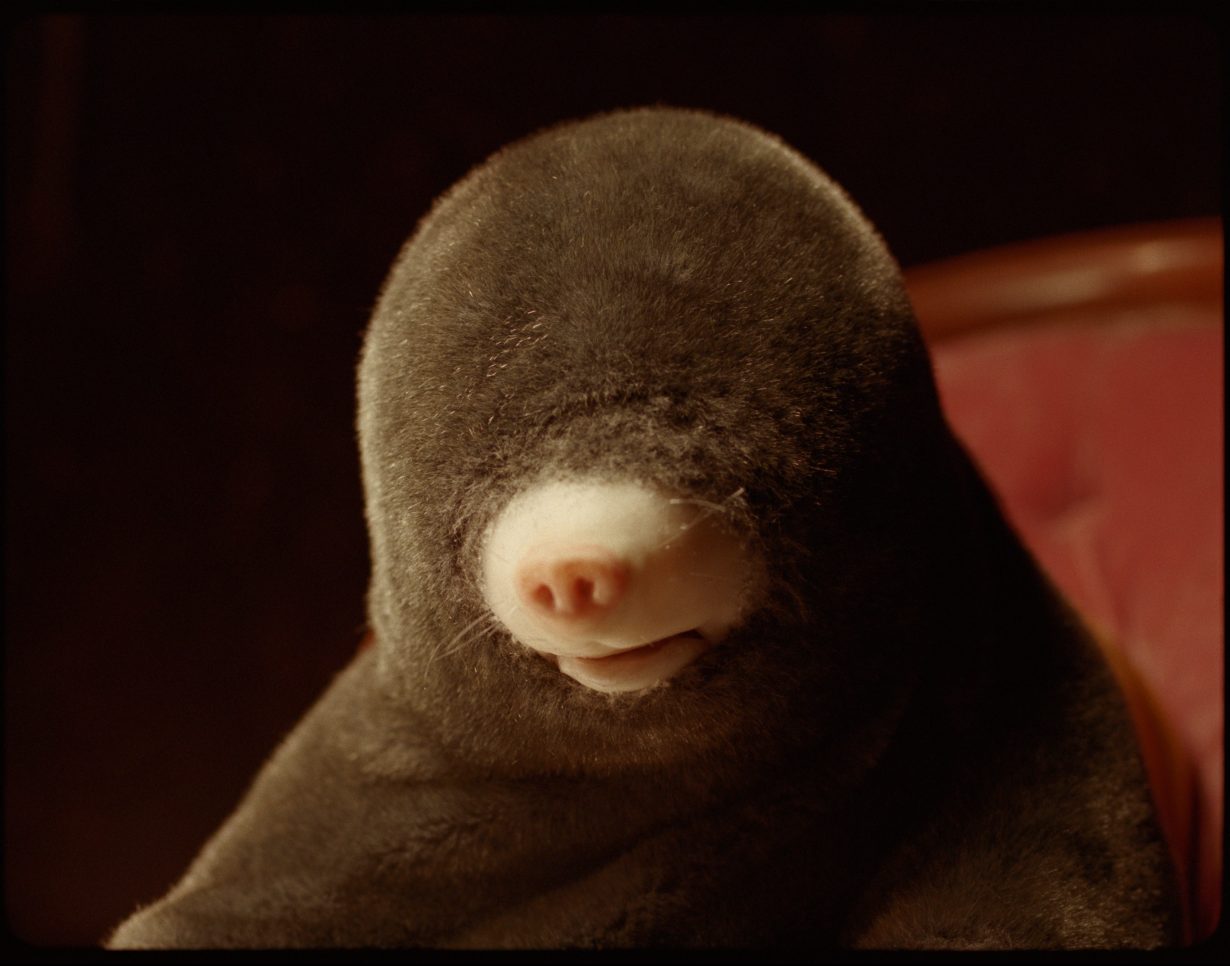
AR Is there a nostalgia for these older techniques, or are you interested in what can be invoked in using them?
DM Many horror movies are going back to traditional special effects, because digital seems to scare people less. It’s complicated, because, of course, a certain use of the digital can be really scary, but there is something in the reality of the materiality that you can see in the image that somehow creates a very uncanny feeling. I like to structure and design everything precisely, and CGI gives you this opportunity: everything must be planned and decided on a computer. Working with animatronics and prosthetics, you can design everything, but at a certain moment the reality comes in and tells you: this stuff takes this space, takes these shapes, reacts this way to this and that. This process of making is very interesting for me, where the reality enters in the project and forces you to shape around it or think about, be exposed to something external that is not 100 percent under your control. In The Parents’ Room it’s important that you can see some issues with the prosthetics, that you see some of the silicone at the nose’s end or around the mouth aren’t cut exactly right or aren’t made up very well – the material, thingness, is a third force that comes into the film, it’s like an unconscious, a level of uncanniness that is brought in by the material.
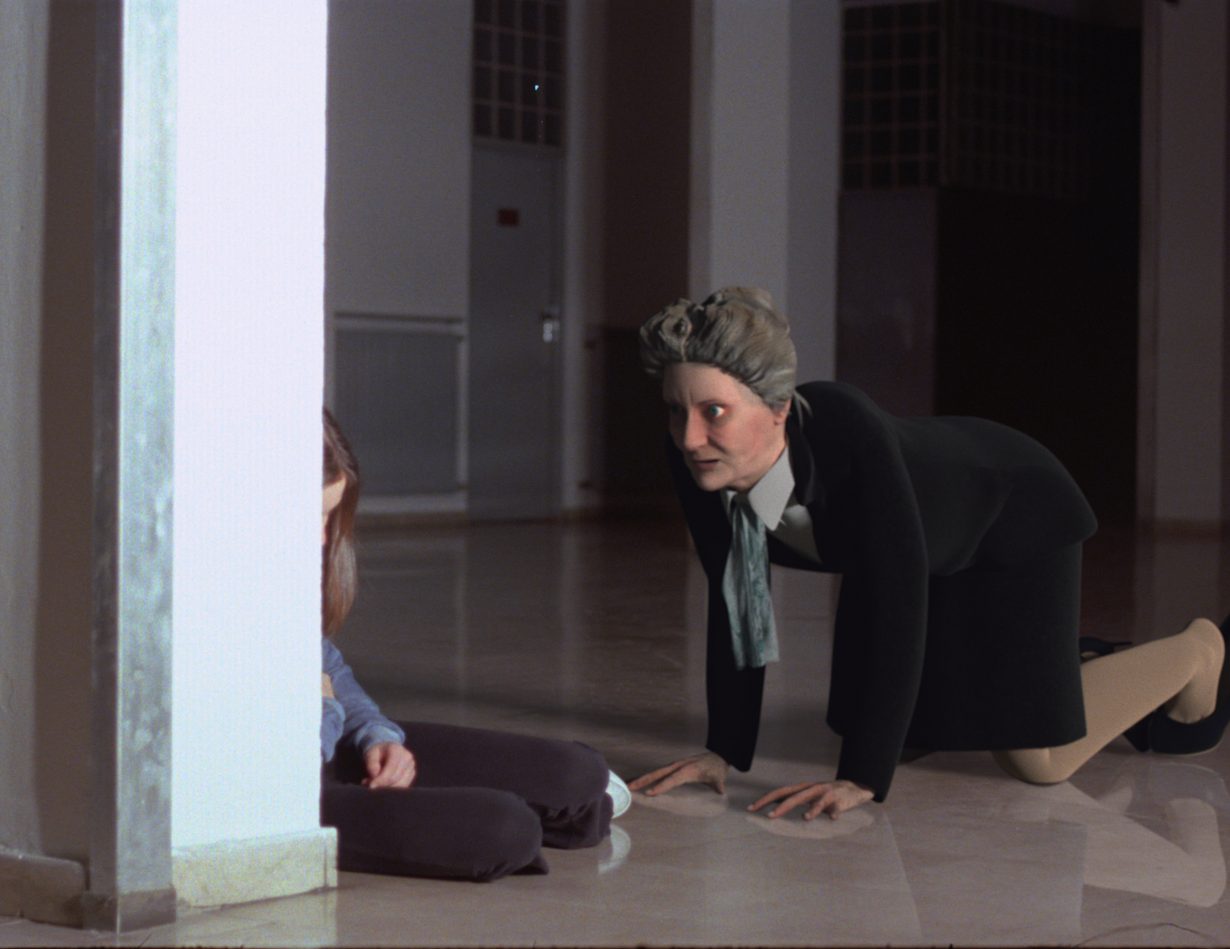
AR ‘Uncanny’ is one of those words that I feel wears itself down in certain ways or can drift into meaninglessness. What does it mean to you?
DM With The Parents’ Room there’s the feeling you have with the characters: you see their faces, faces you might see every day, the eyes are human, but at the same time there is something that makes them not human. For me the uncanny is this feeling of being seduced but at the same time disturbed, a kind of fascination and repulsion. Like my experience of Los Angeles, where you’ve dealt with something from another situation – you know what it is, you recognise it, but at the same time you can’t focus on it. That makes it very alien or different from what you thought it might be.
AR Dolle involves a mole family’s evening scene – where two fastidious parents attempt to do some sort of accounting, while their children sleep nearby – which acts as a 30-minute loop. Where does such a structure start to take shape for you? Why moles, why doing calculations?
DM The idea came when I was working on The Parents’ Room, while colouring in the prosthetic silicone masks used in the film, working in the Tuscany countryside. I thought: ‘It would be nice to do something with a mole just counting.’ The film draws on the classic tradition of anthropomorphic animals. But in general when I work, it’s not like I’m looking for something and I find moles, it’s more like moles find me, they pop up. I don’t know why, I just try to remain open to these kinds of visit. Maybe there are certain aspects of the mind that take an unexpected shape, and in this case it’s the shape of a mole.
Glassa, a solo exhibition of work by Diego Marcon, can be seen at Centro Pecci, Prato (Tuscany), from 30 September to 4 February; Marcon’s solo show Have You Checked the Children will be on view at Kunsthalle Basel from 27 October to 24 January
